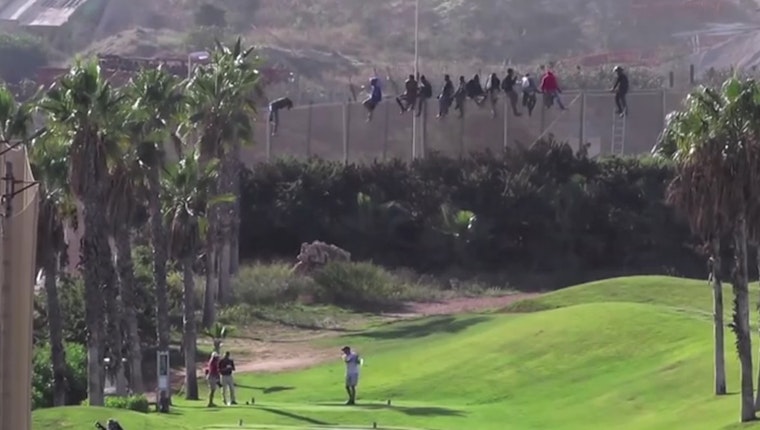Europe’s Migration Crossing Points Captured in Six Films
By Stefano Liberti

“The European border is like a wall—we have to get across, whatever it costs,” said Wassim, a 31-year-old Syrian man I met in Turkey, in the southern port town of Mersin. He had left a wife and a newborn child to flee to Mersin, the new crossing point for migrants trying to reach the European Union.
The smuggler network here was so out in the open that middlemen would advertise their services via Facebook, even posting their own cell phone numbers and the schedules of upcoming trips. From September 2014 to January 2015 around 5,000 migrants, mainly Syrians, managed to get to Europe this way.
Wassim is one of the many people that my team and I met in our four-month journey along Europe’s borders to produce the video series Borderline: Europe’s Walls. We have been in Bulgaria, in the Spanish enclave of Melilla that borders Morocco, on the Italian island of Lampedusa, and in Calais, the French town from which hundreds try to cross the English channel to the United Kingdom. We also explored less obvious borders, such as the Rome Fiumicino airport, where migrants are frequently stopped and pushed back to their home countries or to the transit countries they came through.
The people we met on this journey were mainly asylum seekers, the majority of them fleeing war-torn Syria. They come to Europe at such risk and expense because they have no other options. If they apply for a visa at a European embassy, the most likely outcome is that they will be denied. There is no system in place to apply for asylum from their countries of origin. The only viable choice is to put their life in danger by crossing the sea on makeshift boats, trying to climb over fences, or hiding in trucks that are crossing borders.
Migrants refer to smugglers as “travel agents” rather than “traffickers.” Smugglers are a byproduct of Europe’s immigration and asylum policy: they exist and flourish because European borders are tightly closed.
When the Italian Prime Minister Matteo Renzi calls smugglers the “21st century slave traders,” he is oversimplifying: cynical and ruthless as they are, these organizations are providing their clients with a service. Migrants are not slaves but consenting adults who voluntarily choose to face a difficult journey to reshape their life. It’s a choice made out of desperation.
These are the people we met along the way. All were expecting a welcoming Europe. What they found were smugglers who manipulated them and stole their money, policemen and border guards who kicked them back, petty criminals who robbed them.
The most determined—or the luckiest—managed to cross. Others are still stuck in a limbo. These six videos, realized with the support of the Open Society Foundations and published on the Italian website Internazionale, tell their stories.
Stefano Liberti is an award-winning journalist and author.